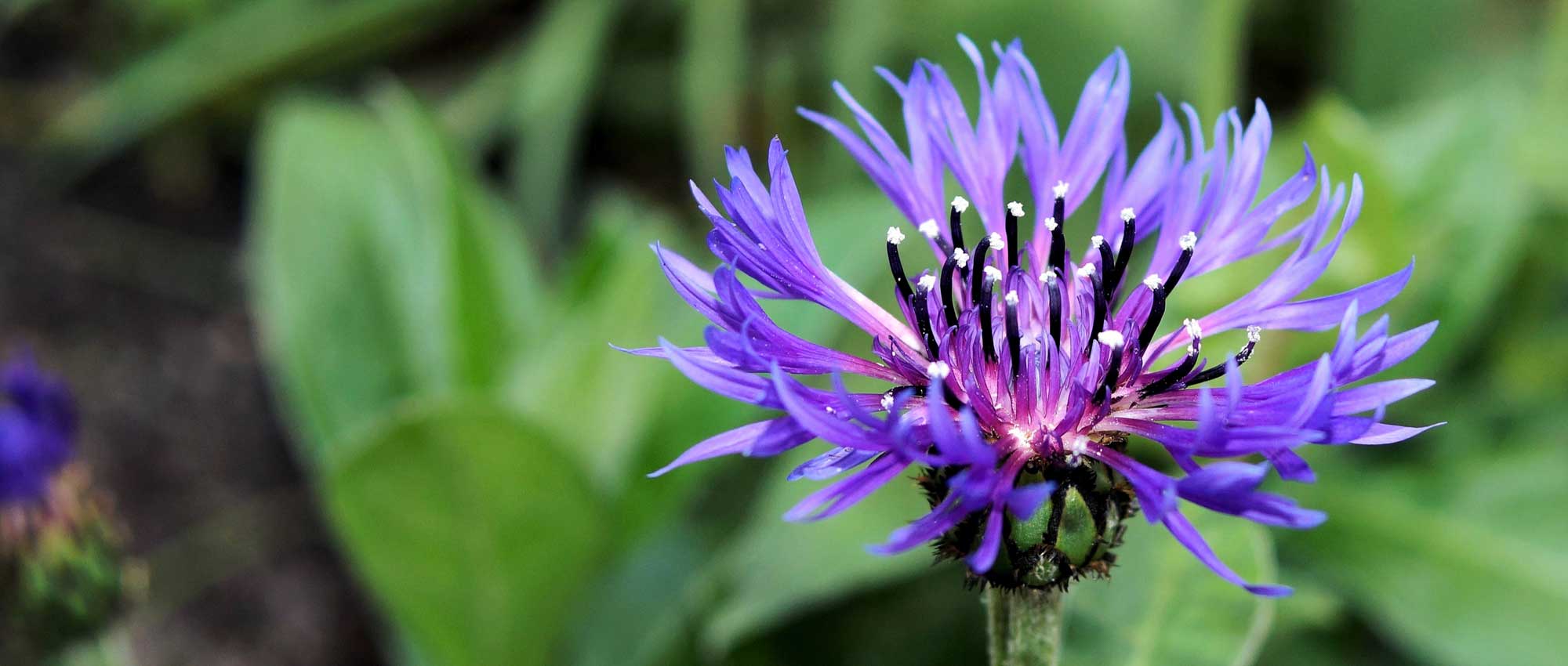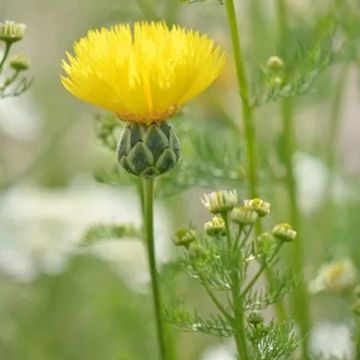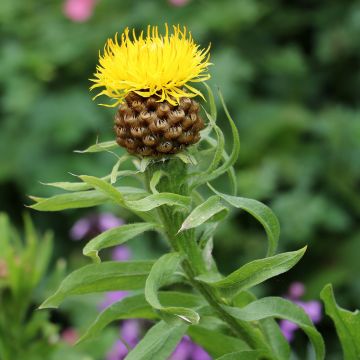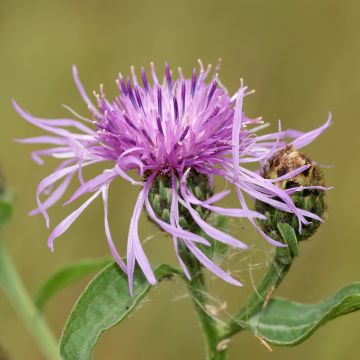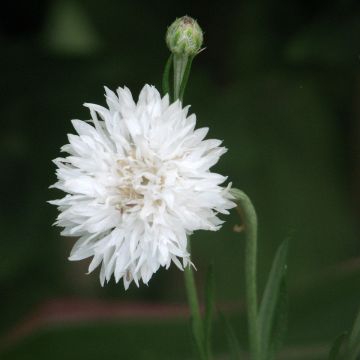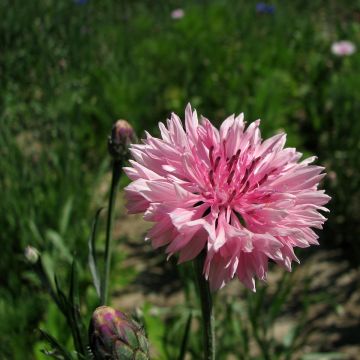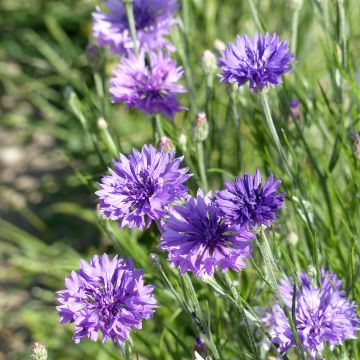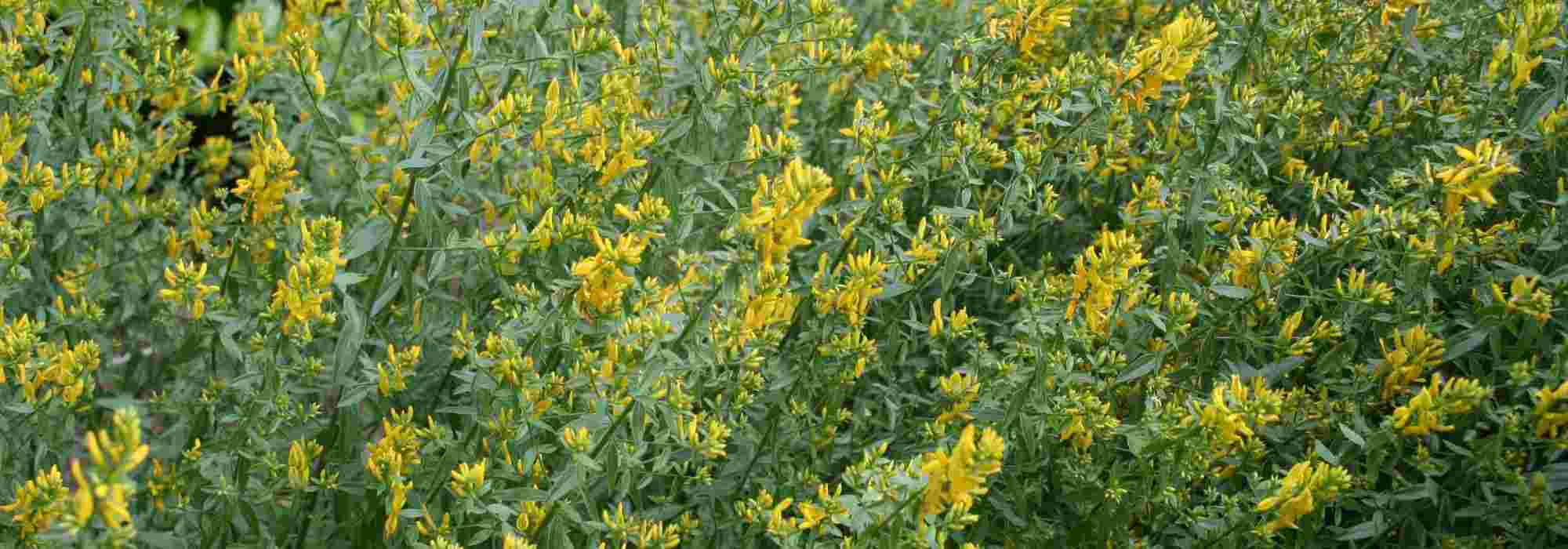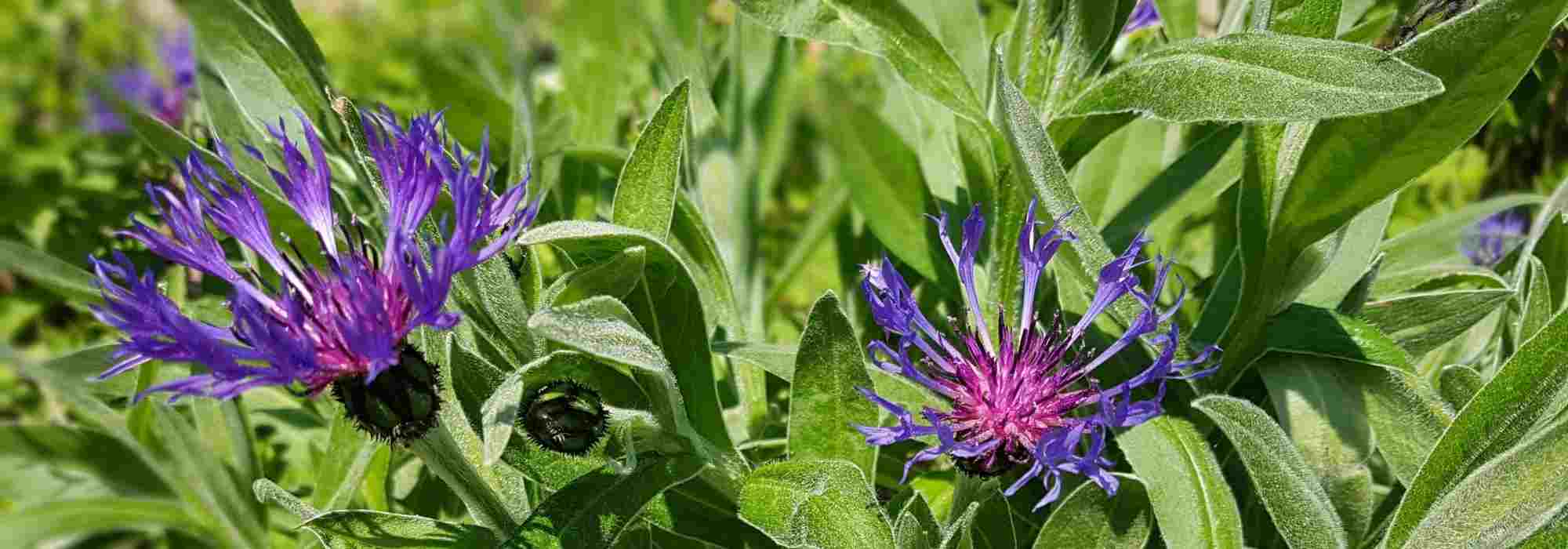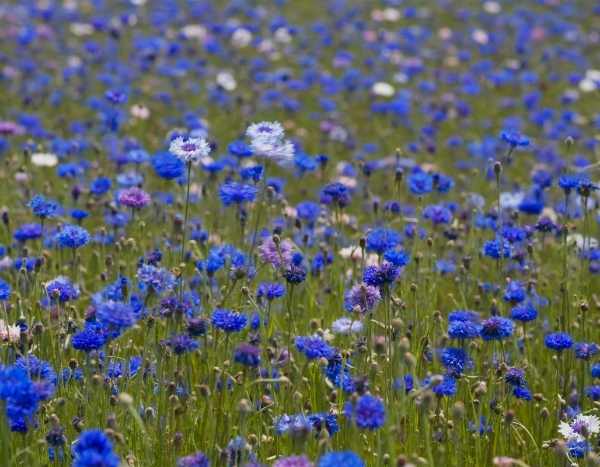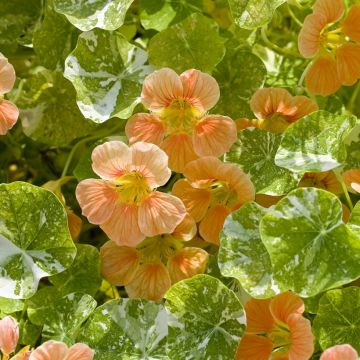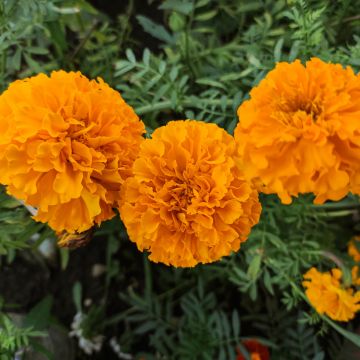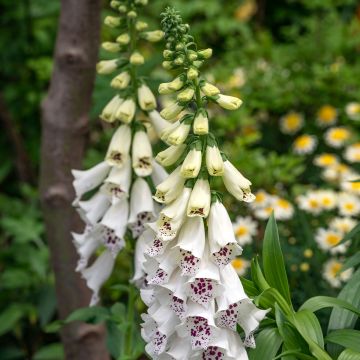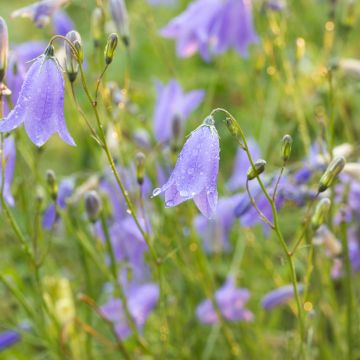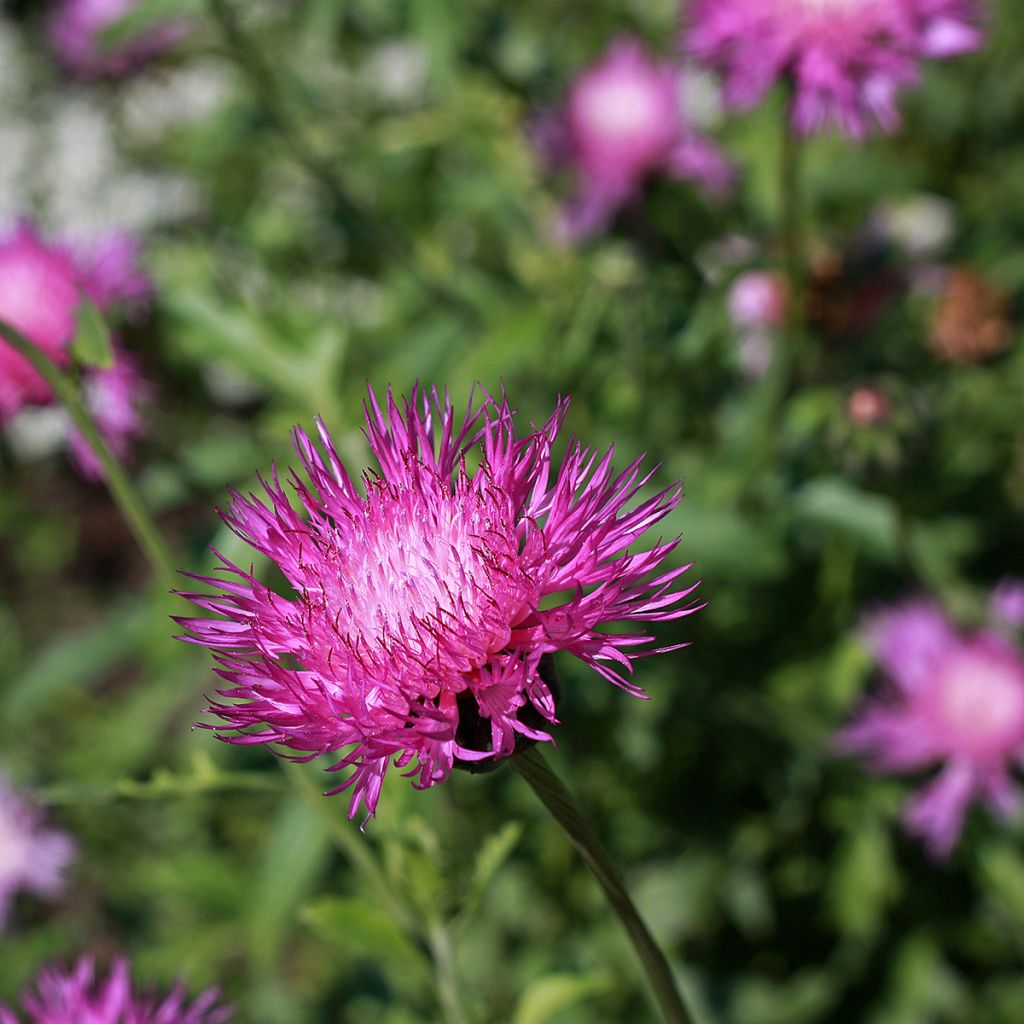

Centaurea moschata Splendens purple - seeds
Centaurea moschata Splendens purple - seeds
Centaurea moschata Splendens pourpre
Sweet Sultan, Amberboa moschata
Special offer!
Receive a €20 voucher for any order over €90 (excluding delivery costs, credit notes, and plastic-free options)!
1- Add your favorite plants to your cart.
2- Once you have reached €90, confirm your order (you can even choose the delivery date!).
3- As soon as your order is shipped, you will receive an email containing your voucher code, valid for 3 months (90 days).
Your voucher is unique and can only be used once, for any order with a minimum value of €20, excluding delivery costs.
Can be combined with other current offers, non-divisible and non-refundable.
Home or relay delivery (depending on size and destination)
Schedule delivery date,
and select date in basket
This plant carries a 6 months recovery warranty
More information
We guarantee the quality of our plants for a full growing cycle, and will replace at our expense any plant that fails to recover under normal climatic and planting conditions.
Would this plant suit my garden?
Set up your Plantfit profile →
Description
The 'Splendens' Purple Musk Thistle is an annual centaurea with a long, pleasantly scented, deep pink-purple summer flowering. This variety, derived from the musk thistle, a wild species native to Iran, blooms for weeks in sunny flower beds, and will create adorable fresh or dried country bouquets. Like many annual plants, it is ideal for filling in empty spaces between other plants. It can be sown directly in place in spring or late summer. It is easy to grow in the sun, in ordinary but well-drained, moist to dry soil.
Originating from western Asia, specifically the Caucasus, Iran, Iraq, and Turkey, Centaurea moschata (also known as Amberboa moschata) is not the most well-known of centaureas. This annual or biennial plant is also called Musk Thistle due to the aromatic compounds that resemble the scent of amber found in its flowers and seeds. It belongs to the asteraceae family, as evidenced by its flower heads.
The 'Splendens' Purple cultivar was selected for its deep pink flowers. This plant is 50 to 60 cm tall when in bloom and grows into an erect clump of slender leafy stems emerging from a basal rosette of leaves. The latter are grey-green, quite large, dissected, 10 to 25 cm long, with a toothed edge. The leaves of the stems are smaller, divided into linear segments with very toothed edges. Flowering occurs from July to September. The inflorescences in heads appear at the ends of the stems, resembling large, 5 to 8 cm wide pompoms. They arise from decorative scale-like buds and are composed of numerous fertile and sterile florets which are pale in the centre and deep pink on the edges. The gently scented, nectar-rich flowers attract many pollinating insects. This plant is hardy down to -12°C. Late summer sowing is possible in mild regions, producing earlier flowers in spring.
This musk thistle, once present in many cottage gardens, has been cultivated for over 350 years but has been neglected by today's gardeners. This medium-height plant is particularly well-suited for perennial borders and works well randomly sown among other plants. It is lovely in a flower meadow with other "wild" plants. In this case, centaureas, grasses, sainfoin, ornamental garlic, borage, motherwort, cornflowers, annual poppies, cosmos, and love-in-a-mist can be mixed. It can also be sown in flower pots and is an excellent cut flower, for fresh or dried bouquets, as it retains its beautiful colours once dried.
Flowering
Foliage
Plant habit
Botanical data
Centaurea
moschata
Splendens pourpre
Asteraceae
Sweet Sultan, Amberboa moschata
Amberboa moschata Splendens pourpre
Cultivar or hybrid
Other Centaurea seeds
View all →Planting and care
Sowing:
Sow musk thistles from March to April or from August to September, preferably directly in place, as their roots do not like being disturbed.
Choose a very sunny location and well-drained soil. Prepare the soil well, it should be finely raked, lightened, and rid of weeds. Sow the seeds 6 mm deep spaced 30 cm apart. Regularly water the soil, especially during dry periods. Germination usually takes 14-21 days. When the seedlings are sufficiently developed to be handled, thin out the plants and transplant them 30 cm apart.
Cultivation:
Centaurea moschata prefers light, even sandy, well-drained soil, and full sun. This plant thrives in moderately moist to moderately dry soil but dislikes excessive moisture and heavy soils. It is very adaptable and tolerates short periods of drought, and limestone. Removing faded inflorescences will encourage more flowers. This robust annual plant will grow in all regions.
Sowing period
Intended location
Planting & care advice
This item has not been reviewed yet - be the first to leave a review about it.
Similar products
Haven't found what you were looking for?
Hardiness is the lowest winter temperature a plant can endure without suffering serious damage or even dying. However, hardiness is affected by location (a sheltered area, such as a patio), protection (winter cover) and soil type (hardiness is improved by well-drained soil).

Photo Sharing Terms & Conditions
In order to encourage gardeners to interact and share their experiences, Promesse de fleurs offers various media enabling content to be uploaded onto its Site - in particular via the ‘Photo sharing’ module.
The User agrees to refrain from:
- Posting any content that is illegal, prejudicial, insulting, racist, inciteful to hatred, revisionist, contrary to public decency, that infringes on privacy or on the privacy rights of third parties, in particular the publicity rights of persons and goods, intellectual property rights, or the right to privacy.
- Submitting content on behalf of a third party;
- Impersonate the identity of a third party and/or publish any personal information about a third party;
In general, the User undertakes to refrain from any unethical behaviour.
All Content (in particular text, comments, files, images, photos, videos, creative works, etc.), which may be subject to property or intellectual property rights, image or other private rights, shall remain the property of the User, subject to the limited rights granted by the terms of the licence granted by Promesse de fleurs as stated below. Users are at liberty to publish or not to publish such Content on the Site, notably via the ‘Photo Sharing’ facility, and accept that this Content shall be made public and freely accessible, notably on the Internet.
Users further acknowledge, undertake to have ,and guarantee that they hold all necessary rights and permissions to publish such material on the Site, in particular with regard to the legislation in force pertaining to any privacy, property, intellectual property, image, or contractual rights, or rights of any other nature. By publishing such Content on the Site, Users acknowledge accepting full liability as publishers of the Content within the meaning of the law, and grant Promesse de fleurs, free of charge, an inclusive, worldwide licence for the said Content for the entire duration of its publication, including all reproduction, representation, up/downloading, displaying, performing, transmission, and storage rights.
Users also grant permission for their name to be linked to the Content and accept that this link may not always be made available.
By engaging in posting material, Users consent to their Content becoming automatically accessible on the Internet, in particular on other sites and/or blogs and/or web pages of the Promesse de fleurs site, including in particular social pages and the Promesse de fleurs catalogue.
Users may secure the removal of entrusted content free of charge by issuing a simple request via our contact form.
The flowering period indicated on our website applies to countries and regions located in USDA zone 8 (France, the United Kingdom, Ireland, the Netherlands, etc.)
It will vary according to where you live:
- In zones 9 to 10 (Italy, Spain, Greece, etc.), flowering will occur about 2 to 4 weeks earlier.
- In zones 6 to 7 (Germany, Poland, Slovenia, and lower mountainous regions), flowering will be delayed by 2 to 3 weeks.
- In zone 5 (Central Europe, Scandinavia), blooming will be delayed by 3 to 5 weeks.
In temperate climates, pruning of spring-flowering shrubs (forsythia, spireas, etc.) should be done just after flowering.
Pruning of summer-flowering shrubs (Indian Lilac, Perovskia, etc.) can be done in winter or spring.
In cold regions as well as with frost-sensitive plants, avoid pruning too early when severe frosts may still occur.
The planting period indicated on our website applies to countries and regions located in USDA zone 8 (France, United Kingdom, Ireland, Netherlands).
It will vary according to where you live:
- In Mediterranean zones (Marseille, Madrid, Milan, etc.), autumn and winter are the best planting periods.
- In continental zones (Strasbourg, Munich, Vienna, etc.), delay planting by 2 to 3 weeks in spring and bring it forward by 2 to 4 weeks in autumn.
- In mountainous regions (the Alps, Pyrenees, Carpathians, etc.), it is best to plant in late spring (May-June) or late summer (August-September).
The harvesting period indicated on our website applies to countries and regions in USDA zone 8 (France, England, Ireland, the Netherlands).
In colder areas (Scandinavia, Poland, Austria...) fruit and vegetable harvests are likely to be delayed by 3-4 weeks.
In warmer areas (Italy, Spain, Greece, etc.), harvesting will probably take place earlier, depending on weather conditions.
The sowing periods indicated on our website apply to countries and regions within USDA Zone 8 (France, UK, Ireland, Netherlands).
In colder areas (Scandinavia, Poland, Austria...), delay any outdoor sowing by 3-4 weeks, or sow under glass.
In warmer climes (Italy, Spain, Greece, etc.), bring outdoor sowing forward by a few weeks.






























